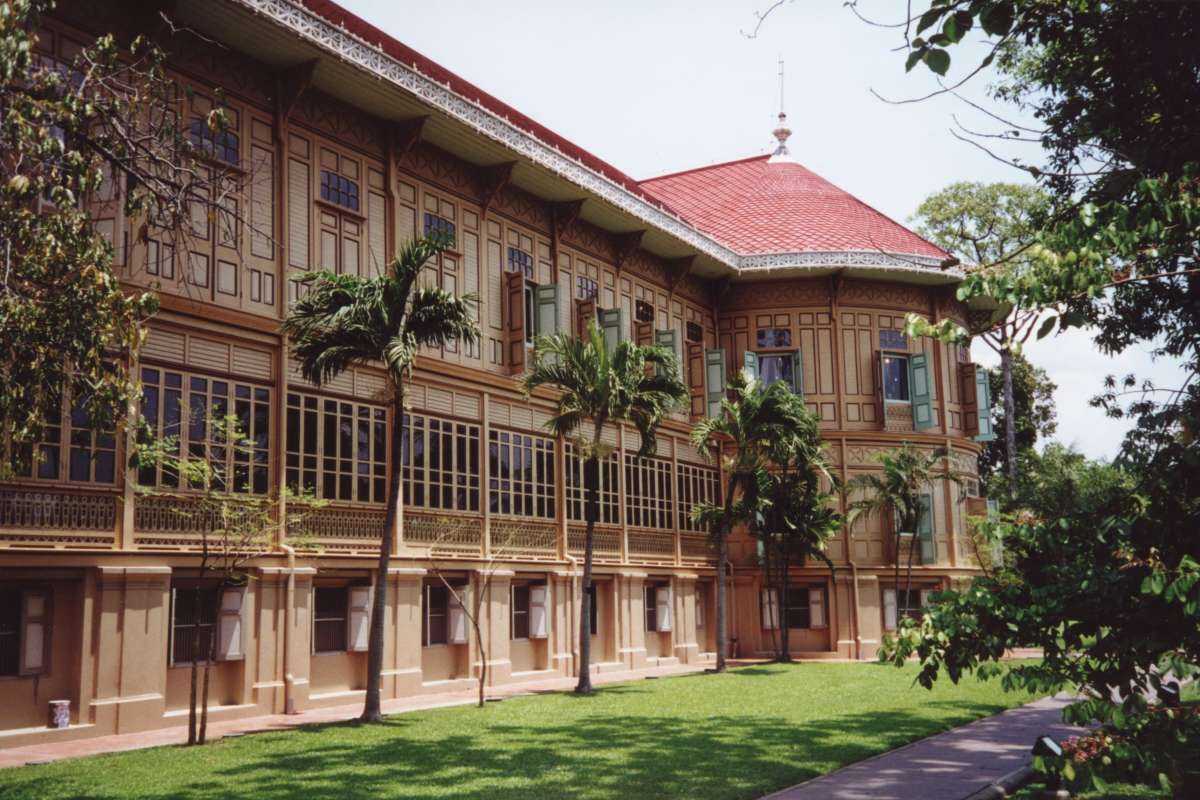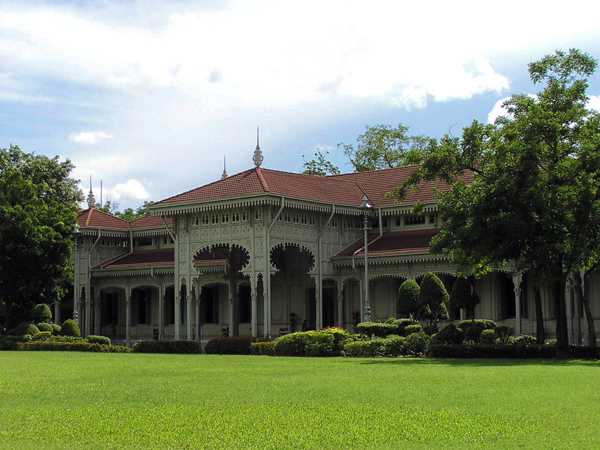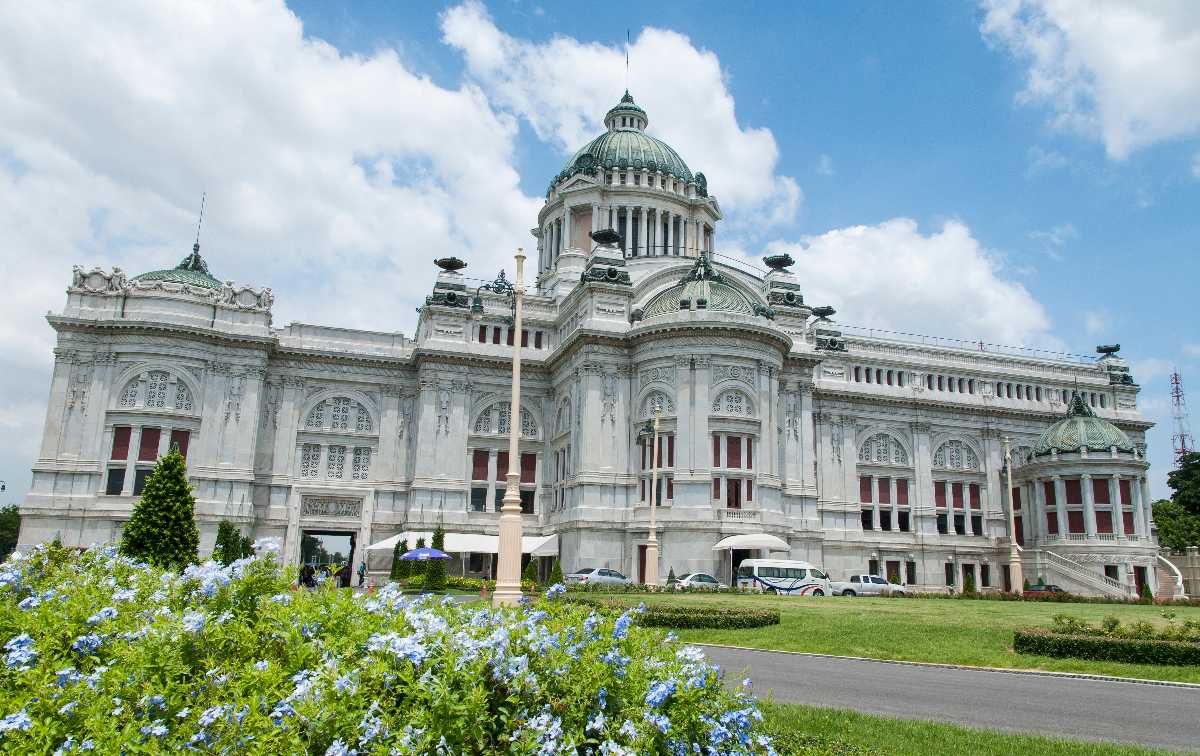Dusit Palace
₹ 164 onwards
View Bangkok PackagesWeather :
Tags : Forts & Palaces
Timings : Tuesday to Sunday: 9:30 AM - 4:00 PM
Time Required : 1-2 hrs
Entry Fee : Adults: THB 100 Children: THB 20
Dusit Palace, Bangkok Overview
Situated north of Rattanakosin Island, the Dusit Palace of Bangkok is a grand complex with royal residences spread over a sprawling area of 16 acres. Comprising multiple palaces, museums, and lush green vegetation, the Dusit Palace is one of the political centers of Thailand in the modern world. The palace, which was once the residence of the King of Thailand, has now transformed into one of the most popular tourist attractions in Bangkok.
The stunning palace demonstrate awe-inspiring structures, inspired by 19th Century AD European architecture, including the Vimanmek Teak Mansion Palace, the Abhishek Dusit Throne Hall Palace and the Ananta Samakhom Throne Hall Palace. The Ancient Cloth Museum exhibiting a wide range of traditional skills and cotton and the Royal Thai Elephant Museum dedicated specifically towards elephants are also must-visit places during the trip to the Dusit Palace.
Read More on Dusit Palace
Historical Significance
Initially, only a single–storey wooden structure was built on the palace grounds, which was used by the King and his family during the weekends for spending moments of respite. Later, Dusit Palace was declared as the official residential palace of the King of Thailand followed by the construction of other palaces over the upcoming rulers, all designed and developed by Europeans. King Vajiralongkorn, son of King Bhumibol, is the recent ruler who resided at Amphorn Sathan Residential Hall of Dusit Palace. Most of the parts of Dusit Palace have been developed as museums and exhibitions for the general public and tourists.
Architecture
It is believed that the gates have been named after human or animal motifs, while the gardens have been named after floral motifs. The entire place is divided into major and minor edifices, named after the kins of the King of Thailand.
Highlights of Dusit Palace

2. Abhishek Dusit Throne Hall: This is one of the finest structure of the Dusit Palace in terms of the architecture and the interiors. Impressed by the Victorian–style gingerbread architecture and Moorish porticoes, the Abhishek Throne Hall gives an opulent and visually striking treat to the people.

3. Ananta Samakhom Throne Hall Palace: Situated at the centre of Dusit Palace compound, the Ananta Samakhom Throne Hall comprises of a two–storey marble structure dating back to the mid–1910s. Synonymous to lavishness and grandeur of the Thai King, Ananta Samakhom Throne Hall has been built in European neo-classical style with Italian marble.

4. Chitralada Royal Villa: Situated within Dusit Palace, the Chitralada Royal Villa houses one of the most exclusive moat and is equipped with all the facilities and services as needed by the royal family. The Villa was also the unofficial residence of King Bhumibol Adulyadej (King Rama IX) and Queen Sirikit, who shifted to the place after his brother, King Rama VIII, died at the Grand Palace. Apart from the lush green gardens and fountains, the Villa also includes the Chitralada School, where children of the royal family and the staff members of the Dusit Palace are educated.
How To Reach Dusit Palace
Ferry: Hop on to the Chao Phraya Express Boat departing for Thewet pier in order to reach Dusit Palace. On reaching the Thewet pier, walk for around 20 minutes to reach the palace.
Sky Train: This is the best mode of transportation in case one wishes to travel low on budget. Board the Sky Train from downtown Bangkok and deboard at Phaya Thai BTS Station. From there, the Palace lies around 3 Km towards east.
If planning to combine both Sky Train and waterways, deboard at Saphan Taksin BTS Station and hop on to the yellow flag boat to reach Dusit Palace.
Bus Board Bus No. 70 to directly reach Dusit Palace from the Old City area of Bangkok. If coming from the Grand Palace, board the bus at Sanam Luang stop to reach directly.
Top Hotel Collections
Top Hotels Near Dusit Palace
Dusit Palace Reviews

Have a Question on Dusit Palace?

experience.